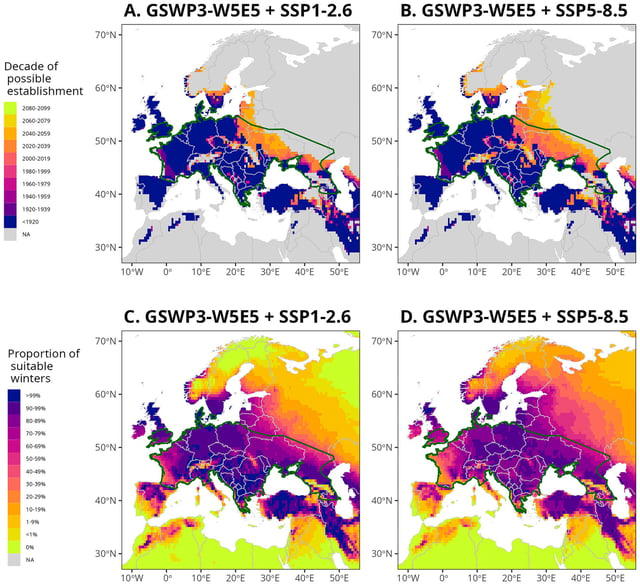Overview
- The common noctule bat's hibernation range in Europe has shifted northeastward by 6.3% between 1901 and 2018 due to rising winter temperatures.
- Researchers validated a model that accurately reproduces these historical shifts and predicts further range expansions of 5.8% to 14.2% by 2100 under moderate climate scenarios.
- Under extreme emissions scenarios, the bat's hibernation range could shift northward by up to 990 kilometers over the next two centuries, driven by a 2.35°C rise in winter temperatures and a 41-day reduction in hibernation duration.
- The study identifies two key factors—mean daily winter temperature and hibernation season length—as sufficient to define the species’ hibernation niche, simplifying future ecological modeling.
- Conservation challenges include potential mismatches between new hibernation areas and availability of suitable habitats and food resources, highlighting the need for adaptive wildlife management.
